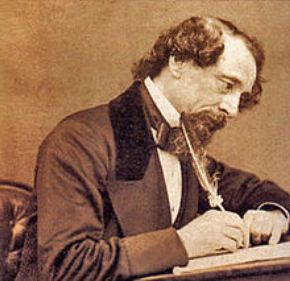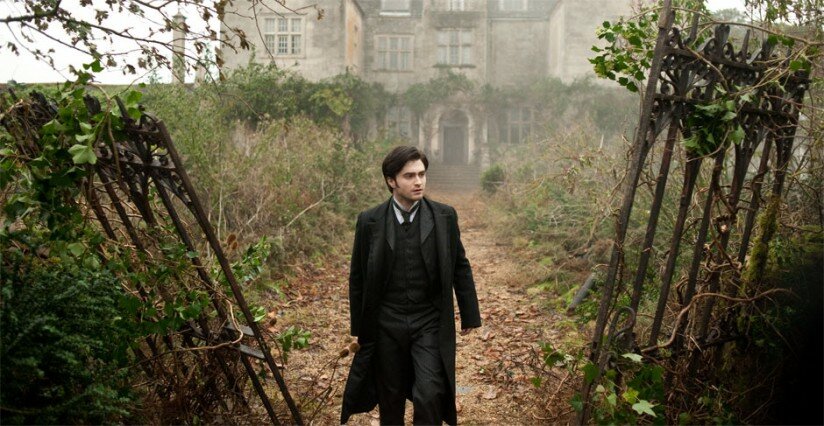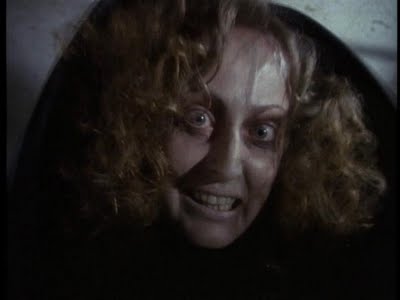

By Mike Wilmington Wilmington@moviecitynews.com
Wilmington on Movies: The Woman in Black: Happy Birthday, Charles Dickens


The Woman in Black (Three Stars)
U. K.; James Watkins, 2012
I like old-fashioned horror movies, including some of the admittedly cheap and even sort of sleazy, but stylish, Peter Cushing–Christopher Lee specials that the old Hammer Studio, revived here, made between 1948 and 1979. And I like them especially compared to most of the blood-drenched, wildly violent and/or wildly illogical new-style ones, like the Saw and Final Destination series or the mock shockumentaries like The Blair Witch Project or The Devil Inside.
Woman in Black , by contrast, is an old-style British horror movie with some new-style violence, a film that takes advantage of the new screen freedoms and technology, but that also employs, often pretty effectively, a lot of the familiar archetypes and tropes of British literary and movie horror, particularly the ones for the haunted house sub-genre. They’re almost all here — from the old dark house full of flickering candles, shadowy corridors, ectoplasmic high jinks and wicked-looking toys, to the usual bedeviled hero or heroine, to a murderous ghost (or monster) running amok in a once-peaceful village populated with scared, hostile villagers suspicious of outsiders, to moonlit tides and glowering skies, to strange old family photographs with scratched-out eyes, dark secrets and mysterious mirror and window reflections of people, often dead, who vanish.
With all that, The Woman in Black — based on the highly-praised novel by Susan Hill — is a movie that may not scare you silly, or make you jump (though it tries nobly to do both at times ) or fill you with fear and loathing (at least not incurably), but that also tries to entertain you in other, more traditional, likeably antique ways.
It does, or should. It did me. Like much of the better classic-style British horror, from Dead of Night to The Innocents to The Others, this movie makes us feel both comfortable and uneasy. And, since the lead actor, Radcliffe, is known to us in a literary context, as the impersonator of the literary hero Harry Potter (from author J. K. Rowling‘s mega-selling book series), one feels comfortable with him too, even though he may still be too young for a role like this: a lawyer and father named Arthur Kipps (shades of H. G. Wells!) in early 20th century London , a legal employee who has lost his wife (in childbirth) and plunged into awful gloom. (Sad, sad…Do you hear that noise outside? No?)
In the beginning, Arthur is summoned by his boss (who is displeased by his employee’s ongoing funk and warns him this is a last chance to straighten out), and he is sent to a northern coastal village called Crythin Gifford and a forbidding old mansion called Eelmarsh to try to straighten out the last affairs of the recently departed Mrs. Drablow (Alisa Khazanova).
Eelmarsh (lovely spooky name, that) is an impressive but ominous-looking place, with Charles Dickensian turrets and Wilkie Collinsesque gables and rooms full of bric-a-brac and shadows and the memory of murder: a place that has seen much evil and dubious housekeeping. Such a house as Poe‘s Usher might have lived and sinned in, lonely, isolated, a bit mad. At times Eelmarsh is cut off from the country by the tide (like the Sir Walter Scottish castle in Polanski‘s great grim Cul-de-sac). This is the house that’s haunted, in this case by the restless, infuriated spirit of a grief-stricken mother, Jennet Humfrye (Liz White) who lost her child in an accident in the nearby bog and muck-mire, and who now terrorizes the town by stealing away its still living children, and taking them over to the dark side, somewhere north of Hammer. (There, I heard it again. Like footsteps, light then heavy.)

How uncomfortable for Kipps! Almost everyone in Crythin Gifford seems to want him gone, or maybe dead, and his own 4 year old son Joseph (Misha Hendley) , who survived the childbirth that killed Joseph’s mother devastating his dad, is due in a few days by train. (How the British love trains! Remember Hitchcock and his timetables?) Yet Kipps, sad and unwelcome as he is, goes to Eelmarsh, helped by the town‘s one seemingly brave and rational man (which, since this is a ghost story, means he‘s wrong): Joe Daily, played staunchly by the beefily British and mild-eyed Ciaran Hinds. Driven to fulfill his unhappy assignment, Kipps goes out to the luckless house and pores over the grisly Eelmarsh past, while mysterious, possibly supernatural phenomena erupts all around him. (Thump, bump.)
Hinds provides most of the top acting in the movie, along with the marvelous Janet McTeer, who plays Joe’s mad wife. Radcliffe mostly has to react, silently, to the horrors of Crythin Gifford, of which there are many. Much of his time is spent in Eelmarsh, all by himself (he believes), discovering through old letters that ghastly chain of events that cost the hapless Jennet Humfrye (Liz White) her illegitimate child, and turned her into a brooding revenge-obsessed spirit, in black. So we see Kipps, a lonely, heart-wrung, scared young man subjected to all the terrors of an old dark house cut off by the tide, in scenes of Grand Guignol that remind you of the gruesome and shadowy corridors of Diabolique, or of the ghosts you can barely see in The Innocents, or of that thing in the room that you‘ve been sensing behind you, softly sneaking up on you, from the shadows, all through this review….
CLANG! JUMP! BOO!! AAGHH!! Well, this movie has to make a living too. And clamorous clangs and sudden shocks and bloody ghosts are all part of the game, aren’t they? Anyway, The Woman in Black, so stylishly sepulchral and full of dread, looks splendid, thanks to the brilliantly fussy production design by Kave Quinn (who worked for Danny Boyle, beginning with Shallow Grave), and the dark bewitching cinematography by Tim Maurice-Jones (who worked for Guy Ritchie, starting with Lock, Stock and Two Smoking Barrels). The ending, a new wrinkle dreamt up for this film, is a beauty.
The Woman in Black was directed by a relative newcomer named James Watkins (his second feature after a Deliverance-style chase horror adventure called Eden Lake), and written by Jane Goldman (who worked on The Debt and X-Men: The First Class and, God help us, Kick-Ass). And it’s based on a very classy piece of material: Susan Hill‘s novel of the same name, which was later adapted into a well-regarded 1989 TV movie, directed by Herbert Wise (I, Claudius, The Norman Conquests and some of Upstairs, Downstairs) and written by Nigel Kneale (of those smashing Quatermass science fiction films).
And still later Hill’s ghost story became a West End hit play by Stephen Mallatrat –– not just a hit, in fact, but the second longest running play in West End Theatrical History (continuously on stage there since 1987), with a run exceeded only by that of the seemingly indestructible (60 years young) snowbound murder mystery drama “The Mousetrap,” by Agatha Christie. It is rumored that Dame Agatha sold her soul to the devil for that run, and that when Mephistopheles appeared to collect, he looked like Hercule Poirot. (Just kidding.) Kneale changed the material, and so did Mallatrat in the stage play, reshaping it into a two-character play in which the actors role-play, as in “Sleuth.” And Goldman changes it as well.
So, at least we can go to a horror movie where we don’t have to watch more mock home movie or surveillance camera photography of monstrous stuff, or kibitz on teen/20 actors being slaughtered in another artificial holocaust for sale.
The Woman in Black has its flaws. But, sitting down and watching it in a darkened theatre sent a pleasant tremor through me, something like settling into a huge comfortable arm chair by a crackling fire in the warm, cozy library of a sturdy English village manor, while the wind shivers through the trees outside, and you pause to sip a hot honeyed tea and open the pages of an elegant ghost or monster story like “Frankenstein” or “Dracula” or “The Turn of the Screw” or a volume of stories by J. Sheridan Le Fanu or Arthur Machen or H. P. Lovecraft or the great Charles Dickens (my favorite of all) or his friend Wilkie Collins (who wrote a 19th century mystery novel called “The Woman in White” that I‘m sure Susan Hill has read or at least sampled). Or, as Vladimir Nabokov might have insisted, of The Divine Edgar. (Poe, of course.) The movie has that enjoyably chilly and dark, yet strangely reassuring feel, of a horror that’s contained and stylized and safely bound between the pages of a book, the frames of a film. A horror that can’t hurt you, or Daniel Radcliffe, or me. We hope.

_____________________________________________________________
_______________________________________________________________________ ___________________________________________________________













